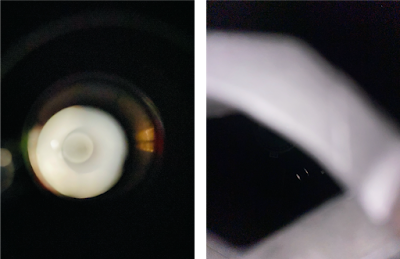The next problem was focusing. The iPhone 11 makes a lot decisions for you. And it has a lot of options. It all just gets in the way.
 |
| When the night has been too lonely and the road has been too long And you think that love is only for the lucky and the strong |
The Austin Astronomical Society featured a guest speaker a couple of months ago who talked about astrophotography. He kept waving his iPhone around saying, "All you need is one of these. All you need is one of these." Well, behind him was an electric guitar. So, this was a dextrous dude. No wonder he finds it easy.
My current project is working my way through Astronomy Activity and Laboratory Manual by Alan W. Hirshfeld. The arithmetic, algebra, and trigonometry are easy, but real the fun is in following the logic and discoveries of the Paleolithic people, Aristarchus, Copernicus, and Kepler, up through Hubble, to measure the day, the distances to the Sun, the Moon, the planets, and beyond.
 |
| Just remember in the winter, far beneath the bitter snows Lies the seed, that with the sun's love in the spring becomes the rose |
It is true that the telescope is a wonderful instrument. Last week, I again observed the star group catalogued as Messier 7, called "Ptolemy's Nebula." Ptolemy knew it as a permanent cloud, just as other ancients catalogued the Andromeda Galaxy as a fixed patch of something. The first telescopes allowed many of those sparkly patches to be resolved into collections of individual stars.
Andromeda was not resolved into a flat disk until our century and it was not so much the 100-inch telescope as it was the photographic plates that made that possible. So, photography is important and useful. That being as it may, only in 1924 did Edwin Hubble rely on Henrietta Leavitt's work with Cepheid variables (1912) to demonstrate that Andromeda is another "island universe" 860,000 light years away.
I distance myself from the hobbyists who stack images and photoshop the colors to produce artwork that is not science. Perhaps even more to the point, Astronomy magazine for August 2020 has a glowing review of the Stellina imaging telescope. This robotic camera "captures and stacks exposures to create ever-more-detailed celestial images." You do not even need to know a single star or constellation. The database does all the work.
PREVIOUSLY ON NECESSARY FACTS
No comments:
Post a Comment
Note: Only a member of this blog may post a comment.